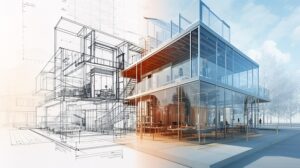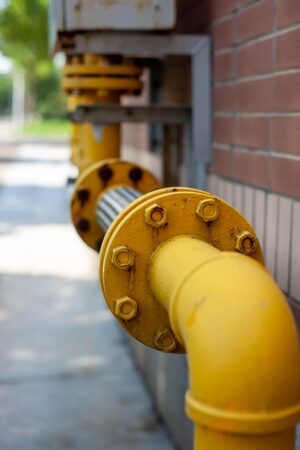Industrial unit heaters, including gas-fired and electric models, offer efficient heating solutions for large commercial spaces like manufacturing facilities and warehouses. Suspended heaters with forced air capabilities provide superior BTU ratings, uniform temperature distribution, and quick response times, enhancing energy efficiency, worker comfort, and productivity in demanding industrial environments. Selection should consider space requirements, ceiling height, desired temperature rise, and specific heater types (gas-fired, electric, suspended, or forced air) for optimal efficiency and return on investment.
High velocity industrial unit heaters are transforming how we heat large spaces, offering unprecedented efficiency gains. These powerful heating systems not only improve air circulation but also ensure uniform heat distribution across vast industrial areas. By understanding their unique capabilities, businesses can optimize operations and reduce energy costs. This article explores the benefits, key features, and selection tips for high velocity industrial unit heaters, providing insights into why they’re becoming a game-changer in modern industry.
- Understanding High Velocity Industrial Unit Heaters
- Improved Air Circulation: The Key Benefit
- Efficient Heat Distribution in Industrial Spaces
- Enhanced Operational Performance with Faster Warming
- Selecting the Right Unit for Optimal Efficiency
Understanding High Velocity Industrial Unit Heaters

High Velocity Industrial Unit Heaters are specialized equipment designed to efficiently heat large industrial spaces such as manufacturing facilities and warehouses. Unlike standard residential heating systems, these powerful devices operate at high BTU ratings, delivering concentrated forced air heating that effectively penetrates deep into heavy duty construction. They come in various types, including gas fired heaters and electric unit heaters, each offering unique advantages based on specific operational needs.
Suspended heaters, a common type, are strategically positioned to circulate warm air evenly throughout the entire space, enhancing overall commercial heating efficiency. This ensures that every corner of the industrial application receives adequate heat, eliminating cold spots. By prioritizing optimal air circulation, these high-velocity unit heaters not only provide quick and effective temperature control but also contribute to energy conservation in manufacturing facilities, ensuring a comfortable working environment year-round.
Improved Air Circulation: The Key Benefit

In the realm of industrial applications, high-velocity industrial unit heaters are transforming warehouse heating and manufacturing facilities. These powerful tools, including gas fired heaters and electric unit heaters, offer a significant advantage: improved air circulation efficiency. By employing heavy duty construction and suspended heaters with forced air heating capabilities, these units enhance BTU ratings, ensuring optimal temperature control throughout vast commercial heating spaces.
This enhanced air circulation isn’t just about warmth; it contributes to a healthier working environment. For instance, in manufacturing facilities, efficient air movement aids in the dispersion of cool air, reducing the risk of heat-related fatigue among workers. Moreover, the uniform temperature distribution prevents hot spots, ensuring maximum productivity and safety in heavy duty construction settings.
Efficient Heat Distribution in Industrial Spaces

In industrial spaces, where vast areas need to be maintained at optimal temperatures, efficient heat distribution is paramount. High-velocity industrial unit heaters play a pivotal role in achieving this by delivering precise and uniform heating across large warehouses or manufacturing facilities. These powerful heaters utilize advanced technologies to ensure every corner receives adequate warmth, minimizing hot spots and cold zones that can hinder productivity.
With options available in both gas fired heaters and electric unit heaters, each suited for specific industrial applications, businesses can tailor their heating solutions. Suspended heaters, for instance, offer versatile forced air heating, allowing heat to circulate swiftly and efficiently. Additionally, BTU ratings provide a clear indication of the heater’s capacity, enabling informed choices based on the size and heavy-duty construction requirements of various manufacturing facilities. This strategic approach ensures optimal commercial heating, maximizing operational efficiency in demanding industrial environments.
Enhanced Operational Performance with Faster Warming

In the realm of industrial applications, faster warming translates directly to enhanced operational performance. High-velocity industrial unit heaters play a pivotal role in this regard, significantly improving air circulation efficiency within manufacturing facilities and warehouses. These advanced heaters, such as gas fired heaters or electric unit heaters, are designed with heavy-duty construction in mind, ensuring they can withstand the rigors of constant use in demanding environments.
Suspended heaters, including those utilizing forced air heating, offer remarkable benefits in terms of BTU ratings, providing robust commercial heating solutions. The swift warming capabilities allow for quicker response times, which is crucial for maintaining optimal production levels and reducing downtime. This efficiency is particularly notable in large-scale operations where efficient temperature regulation can impact overall productivity and energy costs.
Selecting the Right Unit for Optimal Efficiency

Selecting the right industrial unit heater is paramount for achieving optimal efficiency in warehouse heating and manufacturing facilities. When considering options, it’s crucial to assess the specific requirements of your space – factors like size, ceiling height, and desired temperature rise are key. For instance, gas fired heaters offer rapid heat up times and high BTU ratings, making them suitable for large industrial applications that demand intense heating. Conversely, electric unit heaters may be more efficient in smaller areas or situations where noise levels must be kept low.
Suspended heaters and forced air heating systems also have their merits. Suspended heaters provide even distribution of heat throughout the space, ideal for maintaining a comfortable environment in heavy duty construction sites. Forced air heating, on the other hand, allows for precise control over airflow and temperature, enhancing energy efficiency without compromising comfort in commercial heating scenarios. Understanding these options enables users to choose the most effective unit for their specific needs, ensuring maximum ROI and enhanced operational productivity in industrial settings.
High velocity industrial unit heaters are transforming how we heat large spaces, offering superior air circulation efficiency compared to traditional methods. By understanding their unique benefits, such as improved heat distribution and faster warming times, businesses can optimize operational performance while reducing energy costs. When selecting the right heater, consider factors like space size, heating requirements, and fuel efficiency to ensure optimal productivity and sustainability in industrial environments.














